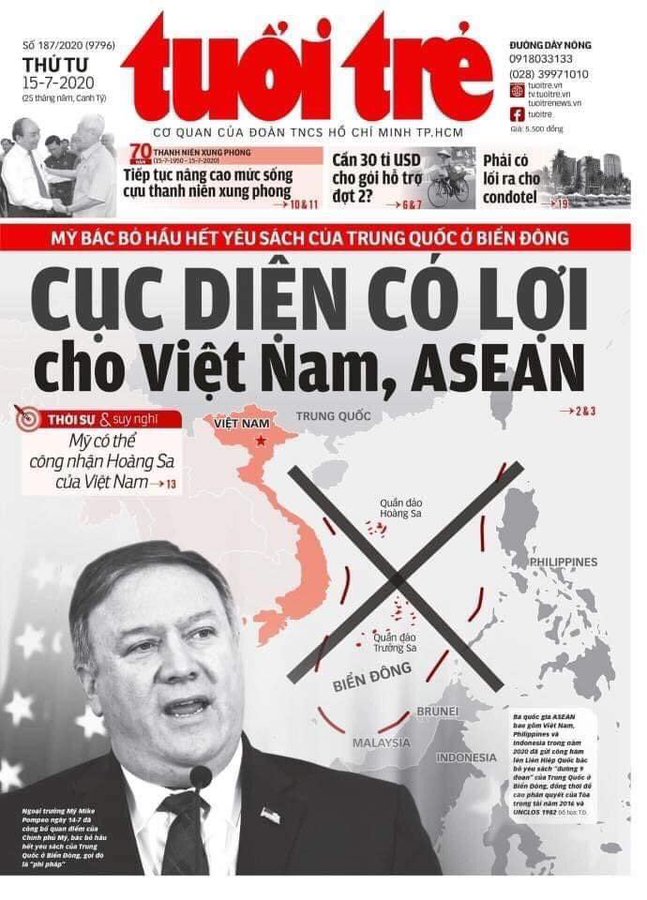
- A number of virtual private network providers in the U.S. and Canada have shut down their servers in Hong Kong, citing concerns over the national security law.
- IPVanish, which shut down servers, alleged the new law puts Hong Kong under the “same tight internet restrictions that govern mainland China.”
- Hong Kong Chief Executive Carrie Lam has continuously defended the legislation, saying the “legitimate basic rights and freedoms enjoyed by the overwhelming majority of citizens will be protected.”
A number of virtual private network (VPN) providers in the U.S. and Canada have shut down their servers in Hong Kong, citing concerns over the national security law.
VPNs are a way for users to protect their privacy and circumvent internet censorship by connecting to servers around the world.
U.S.-based IPVanish and Private Internet Access are among those that announced their decision to disable their Hong Kong servers after China implemented a new security law in the special administrative region last month.
Under Beijing’s new security law, people found guilty of secession or subversion can be punished with a life sentence in prison. Law enforcement also has the power, sometimes without a warrant, to search electronic devices, according to the security law.
Critics say the new law undermines the autonomy that Hong Kong was promised when it returned to Chinese rule in 1997. Under the Basic Law of the Hong Kong Special Administrative Region of the People’s Republic of China, Hong Kong is granted certain rights such as freedom of speech, which does not apply to other Chinese cities.
Technology companies are worried about provisions in the law, some of which give authorities powers to police online content, which could include requiring tech platforms and internet service providers to delete content that falls foul of the legislation.
Already, a number of major U.S. firms, including Google and Facebook, said they would pause handling requests for user data from authorities in response to the new legislation. Facebook said at the time that “freedom of expression is a fundamental human right” and that the company will “support the right of people to express themselves without fear for their safety or other repercussions.”
To be clear, content is regularly censored on internet platforms on mainland China. In addition, two pieces of legislation — the 2017 National Intelligence Law and the 2014 Counter-Espionage Law — appear to compel companies to hand over data if Beijing requests it in the name of “intelligence work,” according to experts who previously spoke to CNBC.
Censorship fears
VPN providers fear this level of intrusion could spill over to Hong Kong.
U.S.-based IPVanish said in a blog post that it had decommissioned its Hong Kong VPN servers and suspended operations there in order to protect “the freedoms of users in Hong Kong.”
“The new law also places the region, once a stronghold of online freedom, behind the same tight internet restrictions that govern mainland China,” IPVanish said. “With this legislative change, we, unfortunately, have to consider Hong Kong and China as one.”
Located in Denver, Colorado, Private Internet Access, said earlier this week it will be “wiping and shutting down” its Hong Kong servers “because new national security laws in the region endanger the privacy of our users and all Hong Kong residents.”
On Monday, Toronto, Canada-based TunnelBear said it would disable its Hong Kong servers. The VPN provider said the national security law has “led to widespread worry that this new law will hurt freedom of expression in Hong Kong.”
The Hong Kong and Macao Affairs Office was not immediately available for comment when contacted by CNBC via email.
Other VPN companies said they would continue keeping their Hong Kong servers online.
ProtonVPN said it is “outraged” by the new security law but it will keep its servers in the city “not only because we believe we can keep them secure, but also because we believe in fighting for Hong Kong.”
The company said it feels it can keep user privacy and data safe because it does not log user activity and does not store personally identifiable information on any of its servers. However, ProtonVPN did add that it would not recommend “handling sensitive content or communications” via Hong Kong servers.
SurfShark, another VPN firm, told CNBC by email that it will not be shutting down servers in Hong Kong as they do not contain any user information and should be safe.
But it added that if there are “requirements from authorities to start logging user activity, we would immediately shut down our VPN servers in Hong Kong.”
Hong Kong Chief Executive Carrie Lam has continuously defended the legislation, saying it “only targets an extremely small minority of offenders” while the “legitimate basic rights and freedoms enjoyed by the overwhelming majority of citizens will be protected.”
Sunday, July 19, 2020
Some VPN firms shut down Hong Kong servers over security law concerns.
5G TECHNOLOGY EXPLAINED IN DETAILS: IT COMES TO CHANGE SOCIETIES

FROM 1G TO 5G
1G: This refers to the first generation of wireless telephone technology, namely mobile communications. It uses analog signals and has a speed of up to 2.4kbps. Phone with no screen could make calls.
2G (GPRS): This refers to the second-generation mobile technology. It uses digital telecommunications standards. The data rate is between 56-114kbps. 2G realizes the digitization of voice communication, and feature phones can send text messages with a small screen.
3G (WCDMA/CDMA 2000/TD-SCDMA): Refers to the third-generation mobile communication technology. It provides a data rate of 384kbps. So you can easily browse websites and stream music.
4G: This refers to the fourth generation of mobile technology, known as LTE (Long Term Evolution). Compared to 1G-3G, it is the best among these types. And it is stable and fast like Wi-Fi at home or office.
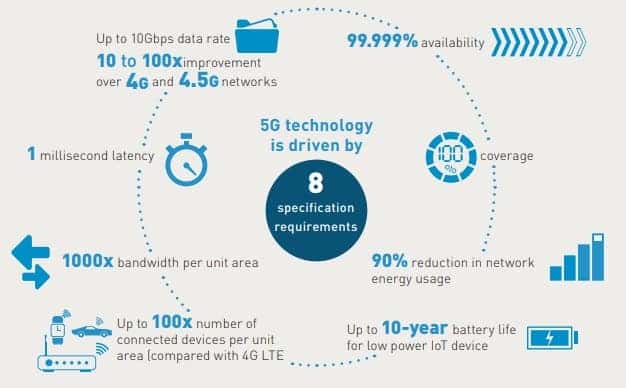
5G is the fifth-generation mobile communication technology and an extension of the 4G system. On June 13, 2018, the San Diego 3GPP meeting set the first international 5G standard. Compared with the former, 5G networks have three main characteristics – extremely high speed (eMBB), extremely large capacity (mMTC), and extremely low latency (URLLC).
HIGH SPEED
We all know that communication relies on electromagnetic waves. And the frequency resources of electromagnetic waves are very limited. Different frequencies have different speeds. Frequency resources are like cars. The higher the frequency and the more cars, the more information can be loaded at the same time. Therefore, the greater the frequency, the greater the bandwidth, and the faster the speed.
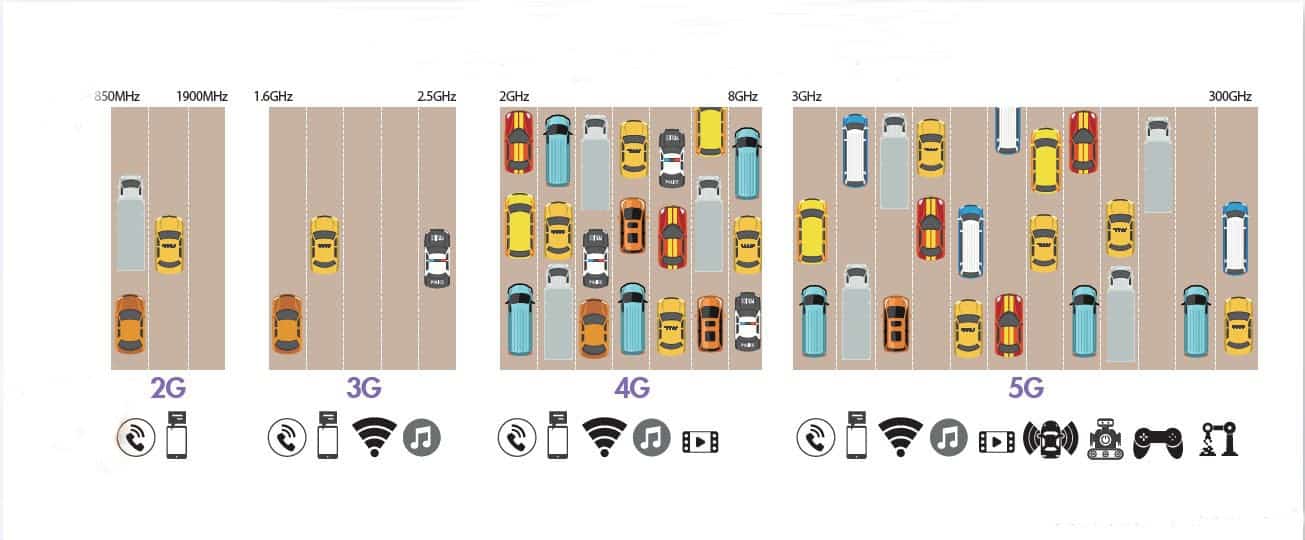
Currently, we use low-frequency bands for 4G. Its advantages are good performance and wide coverage, which can effectively reduce the operator’s investment in base stations and save money. But the disadvantage is that if there are more people, the ‘road’ of data transmission will be narrow. Although the existing technology has been optimized, the rate is still limited. While 5G uses high-frequency bands, the use of high frequency can not only relieve the tension of low-frequency resources but because there is no congestion phenomenon, the ‘roads’ are wider and the bandwidth rate is increased.
To solve the propagation problem of high-frequency communication, it requires relying on the massive antenna (massive MIMO). MIMO stands for ‘multiple input multiple output’.
High-frequency resources also have a short wavelength. In antenna design, the distance between the antenna array and them can be very short, and the antenna array can be integrated in a small range. The increase in the number of antenna elements can bring additional gain.
Under these characteristics, 5G provides a peak data download rate of up to 10Gbps. The peak rate of 4G is about 100Mbps, and the speed is increased by 100 times. Ideally, users can download a 1GB HD video in seconds. 4K video requires a minimum download speed of 25Mbps. 4G cannot meet this requirement. Therefore, 4K live video broadcasting is possible under 5G environment. In addition, the demand for bandwidth in VR/AR is huge. And 5G is possible for the realization of virtualization such as VR.
HIGH CAPACITY
High-frequency millimeter waves can increase the transmission rate. But high-frequency signals are difficult to pass through walls. As the transmission distance increases, the transmission rate will drop faster than the low-frequency band of 4G. In order to ensure an efficient and stable transmission rate, more base stations are required for stable signal transmission. 5G technology introduces micro base stations with small size and low energy consumption. Such base stations can be installed and deployed anywhere in the city and can be installed in street lights, signal lights, shopping malls, houses, etc. Each base station can receive signals from other base stations and send data to users in any location. The signal reception is uniform; the carrying capacity is large; and the ubiquitous network is formed to solve the shortcomings of poor long-distance transmission in high-frequency bands.
This also makes the Internet of Things possible. In the 5G network, in addition to common 3C products such as smartphones and PCs, more terminal devices can also be incorporated into the network. Among them, we can mention smart furniture products that can be controlled via the network (smart sockets, smart air conditioners, smart refrigerators, and smart wearable devices). In the field of the Internet of Things, different application scenarios have different needs of the network.
Some terminal devices require a large amount of real-time data to quickly process feedback, while some terminal devices only require a small amount of data or a few bits of data transmission. It does not require a high transmission speed response, and may even update a small amount of data in a month or two. For example, the usage information display of water meters and electric meters. Therefore, in a 5G network, it is necessary to be able to automatically recognize the network requirements of the device terminal and use different network bandwidths. When a small amount of data is transmitted, 5G’s smart identification uses a narrow-band network that consumes less energy to transmit data, thereby effectively reducing energy consumption and use, and ensuring the usability of low-consumption terminal equipment for long-term operation.
LOW LATENCY
Compared with 4G, 5G has been greatly optimized and adjusted on the existing technical architecture. In order to achieve ultra-low latency, 5G will work together from all aspects of the access network, bearer network, core network, and backbone network.
While greatly reducing the transmission delay of the air interface, the forwarding nodes are reduced as much as possible and the distance between nodes is shortened. The network slicing technology divides the physical network into N logical networks to adapt to different application scenarios.
4G network application servers are concentrated in the central computer room, far away from the terminal, and need to pass through multiple transmission nodes in the middle. 5G uses edge computing technology to deeply integrate the access network and Internet services, deploy cloud computing equipment with computing, processing and storage functions at the edge of the access network, build a mobile convenient cloud, and provide an information technology service environment and cloud computing capabilities. It can reduce the forwarding and processing time during data transmission, and reduce the end-to-end delay.
Low latency makes driverless driving possible. Let’s take a look at this case: a car is running at a speed of 60Km/h; the emergency braking distance of 50ms is 1m, 10ms is 17cm, and 1ms is 17mm; the delay in 4G network is about 50ms; the braking distance is about 1m in 50ms. This may be the gap between life and death. So the delay of 5G networks as low as 1ms makes it possible for autonomous driving to ensure safe driving on the road.

5G CONS AND PROS
CONS
5G sounds good. But in reality, there are still many fields, where equipment vendors, telecom companies, and even the government need to work together.
5G is included in sub-6GHz frequency bands and millimeter wave (mmWave) frequency bands. 4G technology will continue to develop and become a complementary technology in the frequency band below 6GHz. This also means that the telecommunications industry will not completely ignore 4G because of the development of 5G; on the contrary, the industry has expressed that it will moderately rebuild some 4G base stations and strengthen system signal switching.
Since 5G high-frequency millimeter waves are easily interfered, a larger number of base stations need to be deployed to achieve a certain coverage rate. For example, the Japanese government is planning to install 5G base stations on traffic lights and street lights, hoping to increase the density of base stations. This also means that small cells are more important than ever.
The development of 5G micro base stations with ‘massive MIMO’ and ‘beamforming’ has been able to overcome technical difficulties and achieve a certain level.
PROS
5G is wireless Internet technology. The most obvious feature is its extremely fast speed. It is generally 20 times that of 4G and up to 100 times. It can transmit massive amounts of data in a very short time, greatly reducing the delay, and the difference is large enough to bring about fundamental changes. .
In daily applications, the current 4G is actually limited by inherent technology, bandwidth is limited, and there are many restrictions on use. For example, in large concerts or public gatherings, when tens of thousands of people are online at the same time, the Internet speed will become very slow. The huge bandwidth of 5G can solve this problem.
Modern people have higher and higher requirements for audio and video quality. Many programs on Netflix and other streaming platforms have 4K ultra-high image quality options. However, due to the insufficient speed of 4G, very few people will use data streaming to watch. 5G solves this problem as well.
There are also games that require high network speed and latency. The current electronic game design is getting better and better, and the capacity is getting larger. Google’s streaming game platform Stadia advertises that there is no need to purchase an additional game console or download and install the game. 5G has come on time.
WHY 5G TECHNOLOGY IS NOT USED MUCH?
ALTHOUGH 5G NETWORK COVERAGE SPEED IS FAST, BUT CONTINUOUS COVERAGE IS INSUFFICIENT
Insufficient 5G network coverage, even if it is not an obstacle for people to use 5G, has become a factor that no one can ignore when users upgrade to 5G. After 5G enters the 1.0 era, with the accelerated maturity of 5G SA technology and the promotion of new infrastructure strategies, operators will inevitably further increase investment in 5G network construction in the next two years.
ALTHOUGH THE PRICE REDUCTION OF 5G TERMINALS IS FAST, THE COST PERFORMANCE IS NOT HIGH
With the rapid increase in the number of new 5G smartphones on the market, the price of 5G phones also has a rapid downward trend. The price of 5G smartphones has been reduced from about $550 at the beginning of the year to about $450 in May, and to about $250 at the end of June.
New 5G smartphones have been launched quickly and shipments have increased significantly. But it should not be overlooked that the cost-effectiveness of 5G smartphones is still relatively low. Although 5G low-end smartphones can satisfy everyone’s curiosity about 5G network speed, compared with 4G smartphones of the same price, the performance indicators of 5G models still have a lot of room for improvement.
ALTHOUGH THE INNOVATION OF 5G IS LOUD, THE LACK OF UNIQUE APPLICATIONS IS A FACT
With the support of manpower and funds, the innovative application of 5G has achieved gratifying results. The application of 5G in smart mines have become a reality. Judging from media reports, various vertical industry applications related to 5G are only in the pilot or pioneering stage. So there is still a big gap between mature technology or widespread popularization.

CONCLUSION
Relationships should be repaired in name of economic recovery China’s unexpected growth figures are positive for the world and, although there are many thorny issues to resolve with the West, stress why there is need to find common ground
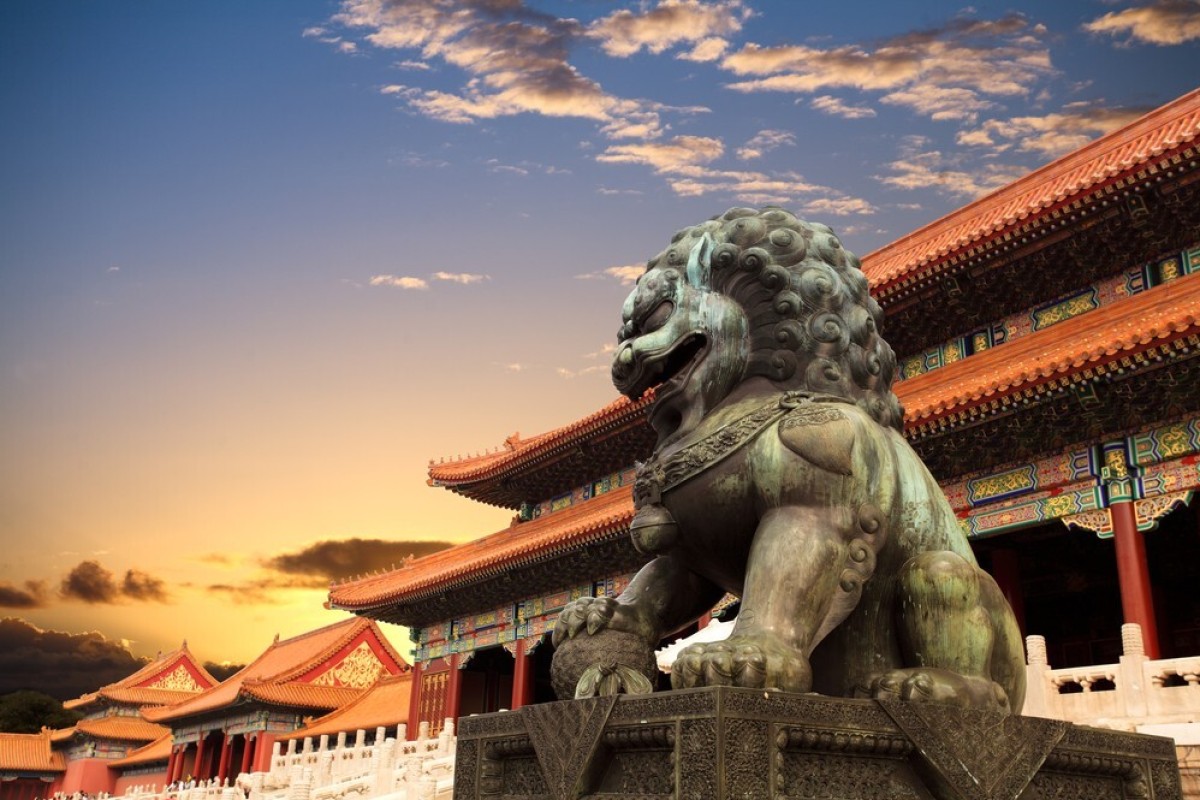
China was the first country to be hit by the coronavirus pandemic. Its economy may now be the first to recover. A better-than-expected growth of 3.2 per cent was posted in the second quarter from a year earlier.
Led by industry and infrastructure spending, it amounted to a sharp reversal from the first quarter’s contraction of 6.8 per cent, an impressive growth compared to other major economies still suffering from the devastation wrought by the pandemic.
Economists have warned that it may be too early for Beijing to start uncorking champagne. After all, consumer spending and exports have been subdued while growth has been uneven across industrial sectors. The job market showed only marginal improvement last month with one out of five people in their early 20s being unemployed. It is possible a rebound will hit a plateau in the next two quarters.
Even so, China’s recovery is still a significant positive for global growth. It may not come to the rescue of the world economy like it did more than a decade ago, in the aftermath of the global financial crisis. It will still play a large role in global recovery.
This may be something for Washington to keep in mind as it rallies allies and friendly governments to “contain” and “punish” China, for any number of real or imagined infractions.
There seems to be a divergence between international economics and politics. The latter has become toxic, if not dangerous, especially between China and the United States. But direct foreign investment is expected to pick up on the mainland for the rest of the year.
It fell 1.3 per cent year on year in the first half of the year, but is likely to recover from now on. In a letter to top international business leaders, President Xi Jinping has personally promised that China will stick to “peaceful development”, continue economic reform and deepen the opening of its domestic market to foreign investors.
Between China and the West, there are many thorny issues to resolve. But if there is a common interest, it is that everyone needs to rescue their economy.
It is easy to paint China as the bogeyman but people should recall the leading role played by China in helping the world economy recover last time.
In 2009, 2010 and 2012 China’s global demand exceeded that of the US and the European Union combined. In 2011 and 2013, it was the single largest contributor to global GDP growth. Foreign critics like to point out that China is still recovering from its debt binge, neglecting to mention that what they criticised might have helped their economies recover.
It is unlikely China will step up to the plate again. However, economic recovery can still be the common ground for all sides to build consensus and repair relationships.
Multiple battlefronts as China takes on the world
Xi Jinping stood before a Democratic Life Meeting of his cadres in May 2014. The gathering in Lankao County, a six-hour drive south of Beijing, has historically been an exercise in self-reflection in a country not usually known for debate.
Those gathered were there to privately criticise the party and each other. Xi had become President by 2952 votes to one just a year earlier and had begun re-orienting China's dour and deferential administration into one that within less than a decade would take on the world.
"It must be clearly understood that the greatest national condition of China is the leadership of the Communist Party of China," Xi said, before ticking off China's push through the collapse of the Soviet Union, the Cold War, three decades of reform and economic growth. "From one victory to another victory, from one success to another success, what else can shake our beliefs?''
Six years after the Lankao meeting, Xi is President for life and his belief remains steadfast. China is now engaged in simultaneous diplomatic, military and trade disputes across Europe, Asia, America and Australia.
At the centre of all these disputes is a China with territorial, technological and economic ambitions that are starting to match the size of its population and the weight of its history, what Xi has called the end of its 200-year eclipse and the "great rejuvenation of the Chinese nation". It is no coincidence that excerpts from the Lankao speech and a dozen others were published on Wednesday in Qiushi, the Communist Party's main theoretical journal.
The world is bracing for more escalations that no longer come by the year or the month.
In one 48-hour period this week, Beijing traded tit-for-tat sanctions with Washington, slammed primaries held by Hong Kong pro-democracy parties as illegal, accused Britain of being a US lackey for banning its flagship telecommunications provider Huawei, confronted the economic fallout from a border dispute with India and warned its citizens they could have their property seized in Australia as diplomatic relations between the two countries evaporate.
A rising China now faces a world that is determined to constrain it. Where will it end?
"Maybe a military confrontation in the South China Sea or Taiwan, or a drastic decoupling of the US and China causing great havoc to the world economy," Jia Qingguo, a member of the Foreign Affairs Committee of the Chinese People’s Political Consultative Conferencee, says from Beijing.
The Professor of International Studies at Peking University accuses Washington of fuelling anti-China sentiment, arguing it is electorally convenient for US President Donald Trump to generate a crisis ahead of the November election amid the fallout from his administration's handling of the COVID-19 pandemic. The US lobbied strongly for Britain to follow Australia and ban Huawei over national security concerns and led international condemnation of Hong Kong before pushing two US Navy aircraft carriers into the South China Sea last week.
US Attorney-General William Barr then accused Hollywood, Disney, Google and Apple of "collaborating" with the Chinese government by censoring films and being "all too willing" to work with Beijing.

The flags of the US and China at the site of a bilateral meeting between Donald Trump and Xi Jinping last year. CREDIT:THE NEW YORK TIMES
The dispute ventured into the absurd on Wednesday when US Secretary of State Mike Pompeo posted a photo of Mercer, his dog, playing "with her favourite toys", including Winnie the Pooh, a nickname for Xi that is censored in China.
Jia argues robust support from Washington has emboldened India, which is now pushing back against China's incursions on a disputed border between the two nuclear-armed nations. India's Ministry of Information has banned 59 Chinese apps, including TikTok and WeChat, after a groundswell of public anger over the deaths of 20 soldiers in hand-to-hand combat with Chinese forces in the Himalayas in June.

Indian activists protesting the deaths of Indian soldiers in border clashes with China burn photographs of Chinese President Xi Jinping. CREDIT:AP
"Why does India all of a sudden take such a tough position? I think one of the reasons is they see they have the backing of the Trump administration," Jia says. "They think they can do it, but it's very dangerous."
Chinese Foreign Minister Wang Yi said this week the US had made an "ill-informed strategic miscalculation" that was fraught with emotions and "McCarthyist bigotry".
“It seems as if every Chinese investment is politically driven, every Chinese student co-operation initiative is a scheme with a hidden agenda,” he said.
Jia warns this tit-for-tat approach could see China withdraw from the rules-based international order. "If the US wants to make China the enemy, why should China not engage in an arms race?
"People are very upset," he says. "I don't think China can change people's minds. I think a crisis will."
Jia's assessment of a US-led blockade is not shared by the Morrison government, Britain or increasingly, members of the European Union, which have come to their own conclusions on China's more assertive diplomacy, despite up to 53 countries including Cambodia, Pakistan and Syria backing China's position at the United Nations.
Germany has taken a keen interest in Australia's fraying diplomatic relationship with Beijing, according to sources in Canberra, as Europe hardens its position on China in response to its crackdown on Hong Kong, the historically liberal territory that for more than a century functioned as a conduit between East and West.
Berlin, which has long maintained a China principle of "change through trade" is now leading calls for the European Union to "take a strong stand".
It is grappling with its own debate over Huawei after Britain banned the Shenzhen giant from its 5G network this week over concerns its technology could be used to spy on its citizens.
More than any other company, Huawei and its fellow Chinese globetrotter ByteDance, owner of TikTok, face the dilemma of China's engagement with the world.
They oscillate between two spheres, two systems of government and two enormous markets. TikTok has more than 1.6 million users in Australia alone and 2 billion worldwide. It has an equally popular Chinese version called Douyin, which has publicised crackdowns on protesters in Hong Kong and suspended users for speaking Cantonese, the form of Chinese used in the city.
In Washington, the Committee on Foreign Investment in the United States is investigating if the millions of videos uploaded to TikTok daily could give the Chinese government access to a vast facial recognition database.
The same backdoor security threat posed by Chinese multinationals and their state-linked companies is driving the fear of Huawei and its role in the most important global technology in a generation - the 5G network that will connect most of our lives to the internet.
Simon Lacey, the former vice-president of trade facilitation and market access for Huawei Technologies in China, is now a senior lecturer in international trade at the University of Adelaide. Last week he acknowledged Huawei's inherent contradiction.
"In China, it had to demonstrate unwavering loyalty to the goals of the Communist Party leadership. Outside China, it had to argue that it had little or nothing to do with the Chinese state," he said in a piece first published in The Conversation.
"The limited space it has to operate is becoming increasingly narrow, to the point where in many markets it is no longer able to appear to be both."
Xu Xiaonian, an honorary professor at the China Europe International Business School, says he has seen the Chinese government take an increasingly assertive role in business in the past few years "as the state advances where the private sector retreats".
"We would hope that we can stop that trend and reverse it," Xu told the Lowy Institute this week. "I don’t see any sign of the policies moving in that direction, which is very unfortunate."
Huang Yiping, a member of the Monetary Policy Committee at the People's Bank of China, says China has been a main beneficiary of the globalisation process, but partial decoupling of its economy from the US is probably the best it can hope for.
"My own recommendation, and that of most Chinese economists, is that China should continue with an open-door policy," says the professor of economics at Peking University. "There is still a large rest-of-the-world but the problem is even this rest-of-the-world is becoming much more uncertain."
Xu doesn't agree that confrontation between the two superpowers is inevitable.
"It is possible to avoid that confrontation. In history we have a precedent. Germany under Otto von Bismarck successfully avoided confrontation with France and the UK. Why today we cannot do that?"
This is true but the analogy has a problem. Germany's first chancellor also annexed Alsace-Lorraine. Two decades after his reign the world would be at war.
US shift on South China Sea may help Asean’s quiet ‘lawfare’ resolve dispute A new arbitration case may be the best way to persuade China that dispute resolution through international law is the best way to peace in the waters. By Bhavan Jaipragas

Still, that does not mean we should expect total silence from these countries.
In fact judging from how Vietnam and the Philippines have reacted, it is reasonable to expect that these two claimants – by far the boldest in speaking up against China’s assertion in the waters – may capitalise on the new US position to solidify their legal stances on the row.
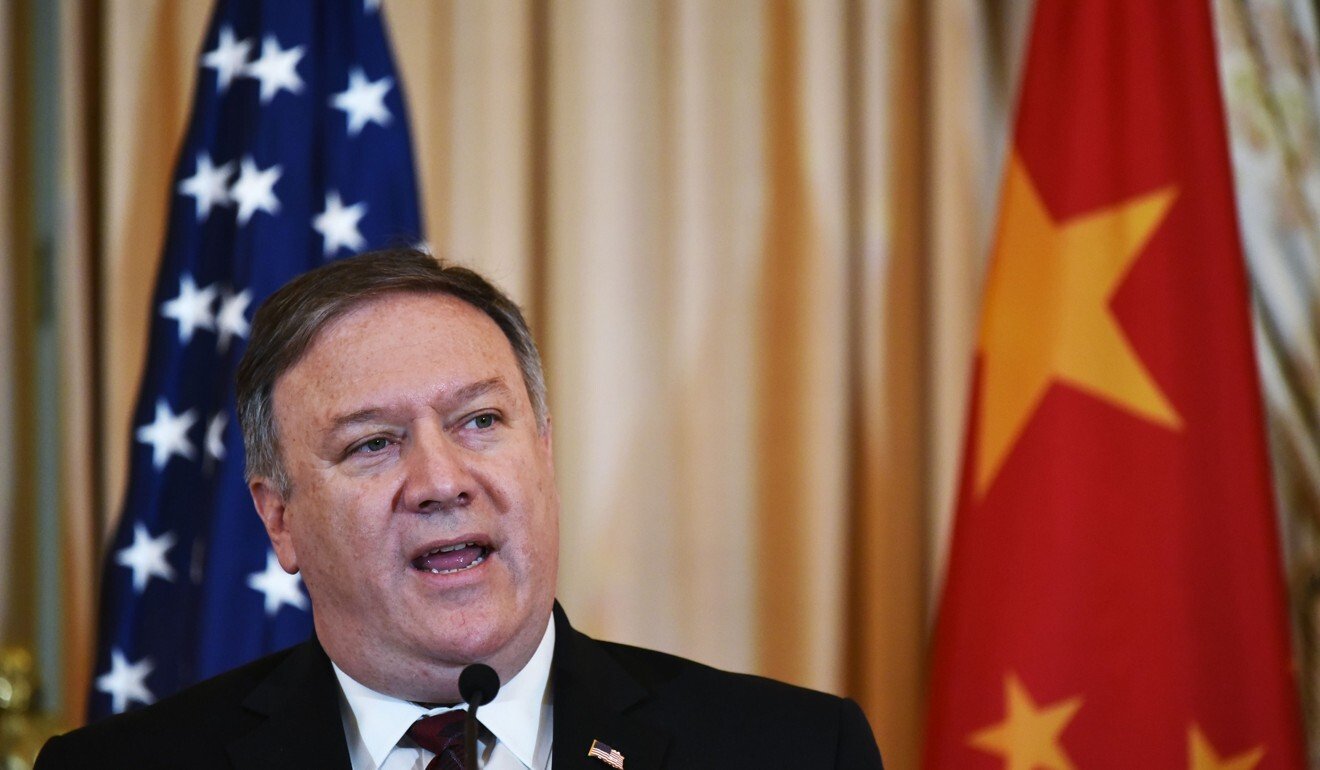
And even if the position carries little or no legal sway, it adds significant weight to the countries’ efforts to show that the findings of a 2016 arbitral ruling against China’s so-called “historic rights” in the waters should underpin how the dispute is resolved.
Kelly Craft, the US Ambassador to the UN, in June wrote to UN Secretary General Antonio Guterres endorsing these positions.
In his statement this week, Pompeo fully endorsed the ruling by the Permanent Court of Arbitration in The Hague – a position the US government had not previously taken.
The Southeast Asian claimants say the Chinese boundary encroaches on their territorial waters as set out by the United Nations Convention on the Law of the Seas, while Taiwan – viewed by Beijing as a renegade province – has a similar claim as the Chinese mainland.
Indonesia, a seventh party in the dispute, insists it is not a claimant though the northern reaches of the exclusive economic zone of its Natuna islands are within China’s nine-dash line.
Before the pandemic struck, Asean diplomatic insiders told me they had witnessed an increasing, albeit quiet, alignment in thinking between Vietnam and the Philippines on the use of international arbitration mechanisms to deal with the dispute.
Asked about the latest developments, one of the diplomats – who is from a third Asean country – told me he believed Hanoi’s hand had strengthened as a result of the new US position.
Vietnam has publicly given little hint on its plans, though it recently nominated four arbitrators and four conciliators – a move seen as a precursor to bringing an arbitration case on behalf of the state.
China did not take part in the 2016 proceedings brought by Manila and does not recognise the ruling.
Observers have previously said if there is a fresh challenge by Hanoi, Beijing may take part.
A new arbitration case – as undramatic as it may sound – may well be the best way to persuade China that dispute resolution through international law, rather than unilateral alterations of the status quo, is the best way to peace in the waters.
What Will Happen if the Coronavirus Vaccine Fails? A vaccine could provide a way to end the pandemic, but with no prospect of natural herd immunity we could well be facing the threat of COVID-19 for a long time to come. by Sarah Pitt
There are over 175 COVID-19 vaccines in development. Almost all government strategies for dealing with the coronavirus pandemic are base...



